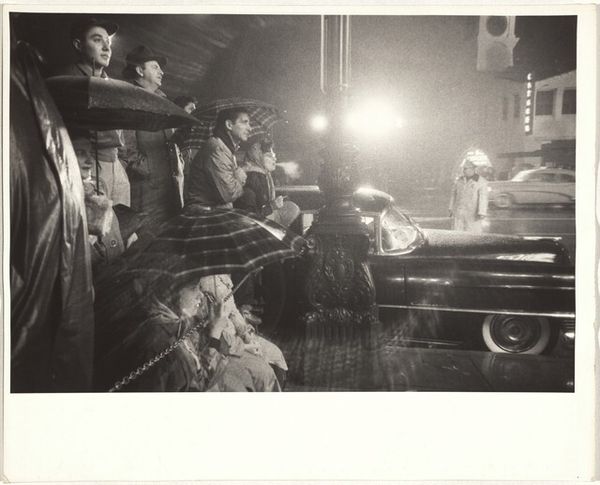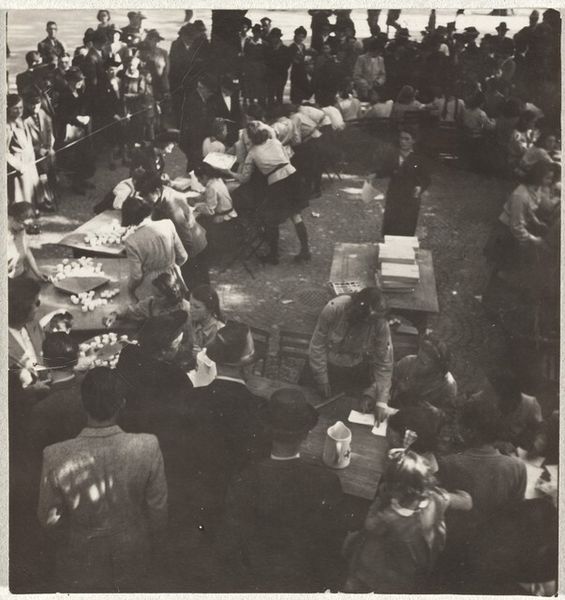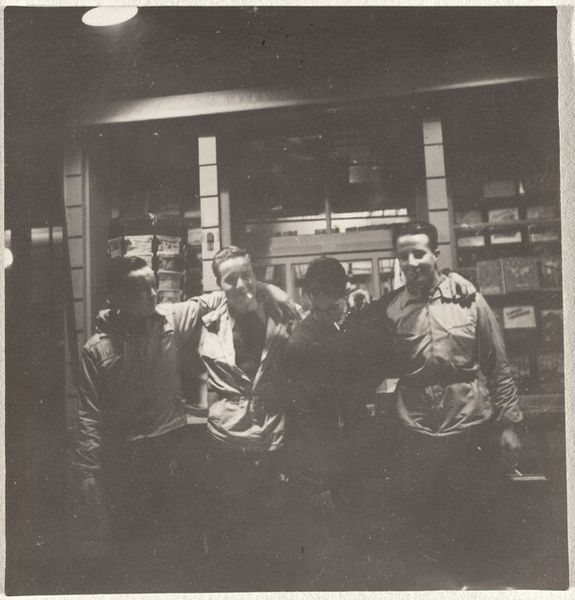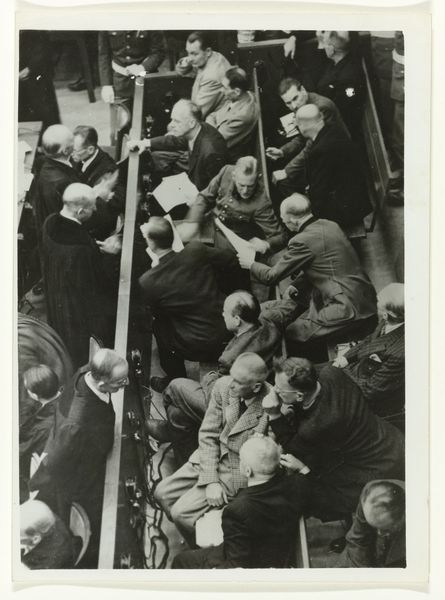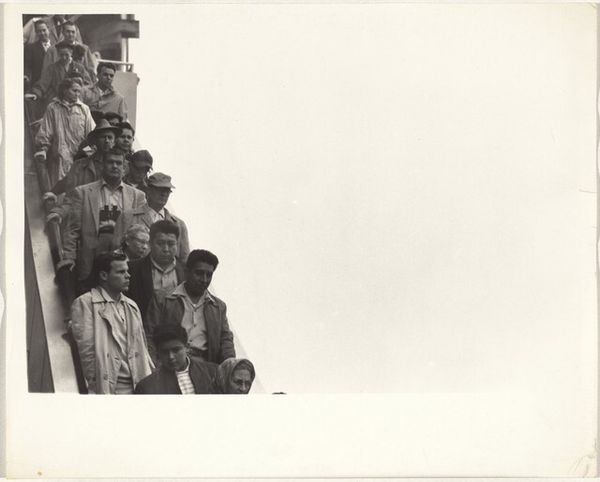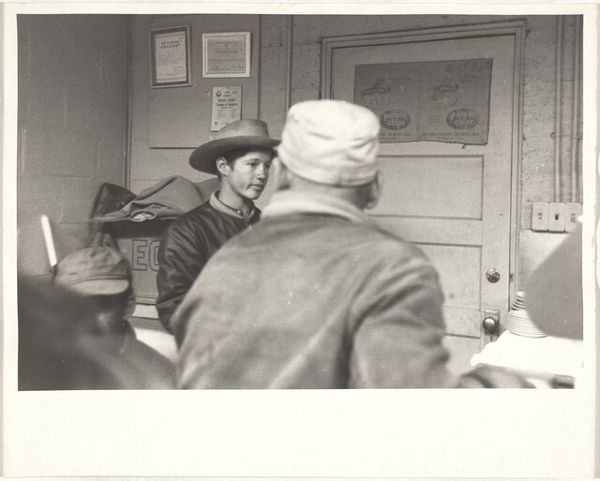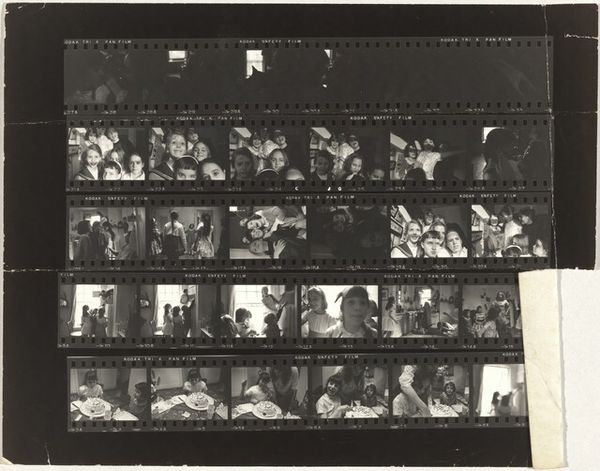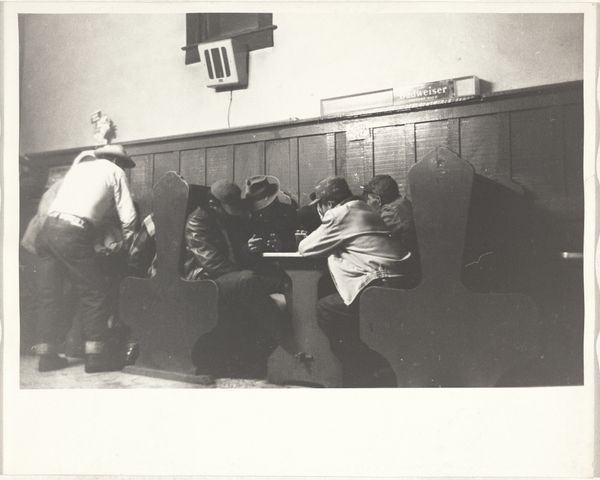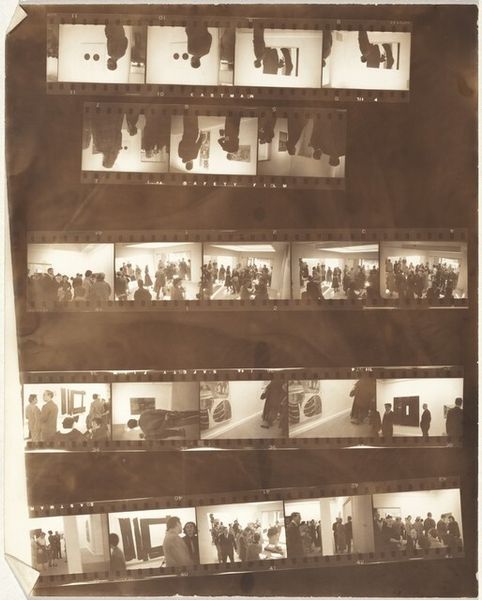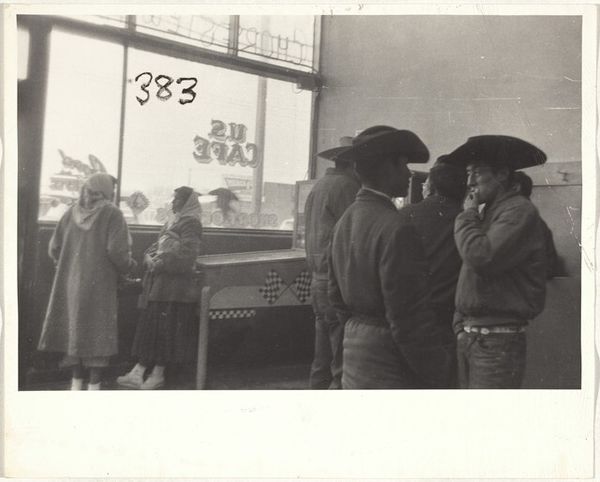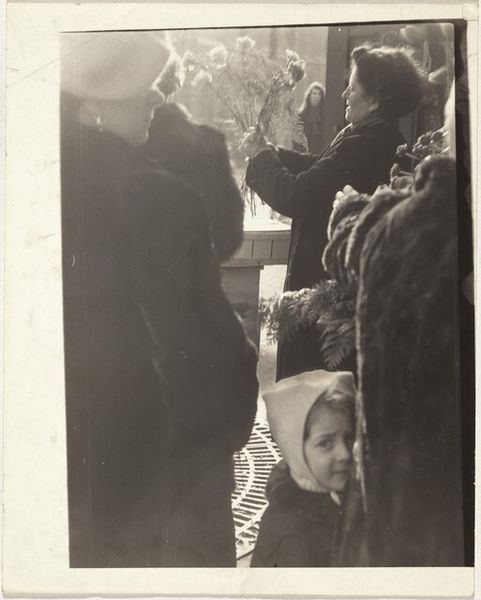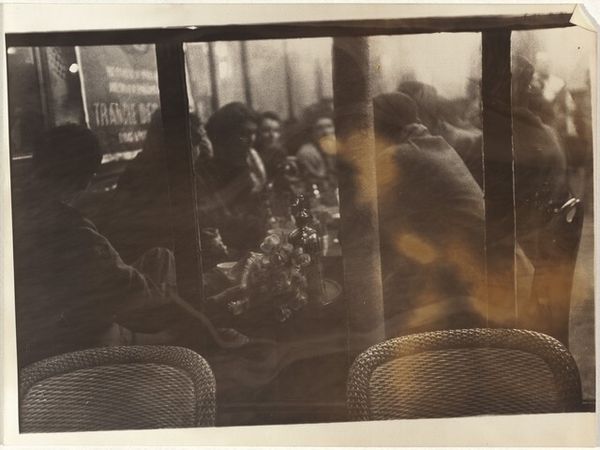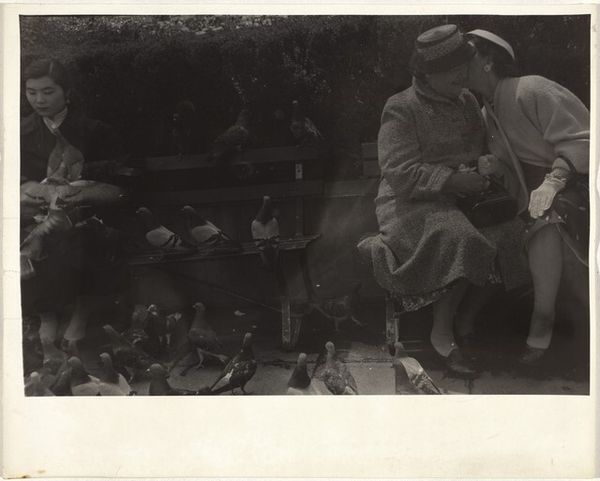
print, photography, gelatin-silver-print
#
portrait
#
print photography
# print
#
archive photography
#
street-photography
#
photography
#
culture event photography
#
historical photography
#
gelatin-silver-print
#
pop-art
#
history-painting
#
realism
Dimensions: sheet: 25.3 x 20.3 cm (9 15/16 x 8 in.)
Copyright: National Gallery of Art: CC0 1.0
Curator: Robert Frank's "Group on bleachers--Blackfoot, Idaho," created in 1956, offers a stark, yet intimate, glimpse into small-town America during that period, presented as a gelatin silver print. Editor: The most immediate thing is the textures; look at the way the light catches on the different materials – the wool of their jackets, the hard wood of the benches, even the paper some of them hold. Curator: Absolutely. Frank captured a feeling of profound observation through what appears like mundane representation. Their hats alone speak volumes. What are they attending? Is this a court? A gathering for local industry? The expressions carry a collective weariness, and their somber mood seeps from this document of a particular social landscape. Editor: You see that through the faces; I see it primarily through the clothing. Each person has a specific lived in-quality, their clothes worn according to labor and local conventions. But also notice how the materials themselves signal social strata. Curator: Indeed. Those nuances can almost feel like sociological markers—echoing broader conversations about class and societal structure present during the mid-century. One wonders what was going on here in Idaho to bring so many individuals from diverse backgrounds into this place, what expectations and assumptions they held regarding that singular purpose? Editor: Considering the production side of things, you've got the gelatin silver print allowing for rich tonal range; consider how the print itself has stood the test of time, its physical preservation indicative of our sustained engagement. Curator: The photograph operates on multiple layers. On one hand, it captures an seemingly common situation, a shared human activity to attend and to spectate. On the other hand, in viewing them from so many years on, these persons assume positions of silent icons from the past—representatives of a long forgotten historical movement—allowing new questions regarding what, and who, exactly are we witnessing through the passing lens of Robert Frank. Editor: It's fascinating to think about the accessibility and constraints of this photographic technology at the time. It was able to preserve this event, to put faces and bodies from the past on display—raising a point of discussion about our fascination with accessing, categorizing, and ultimately commodifying experiences for viewing pleasure. Curator: Indeed. It feels almost like holding a moment frozen in time. Editor: A very tangible piece of history.
Comments
No comments
Be the first to comment and join the conversation on the ultimate creative platform.
